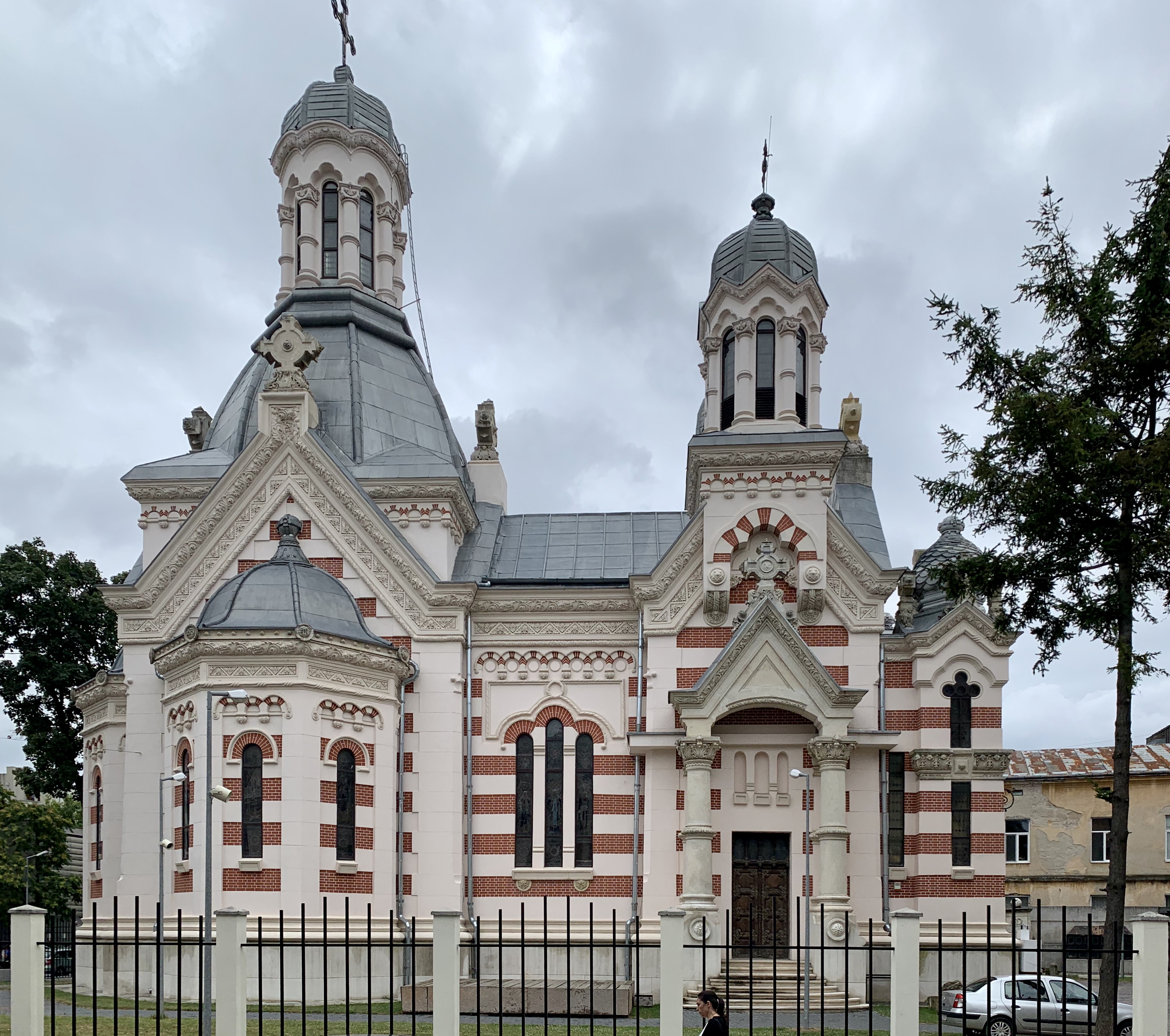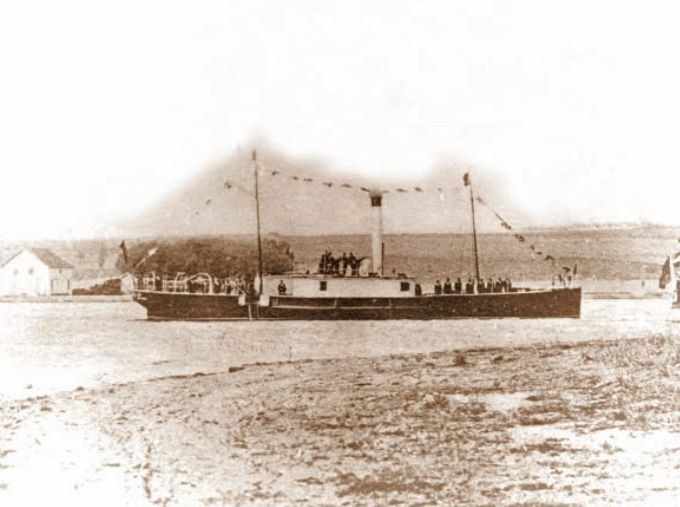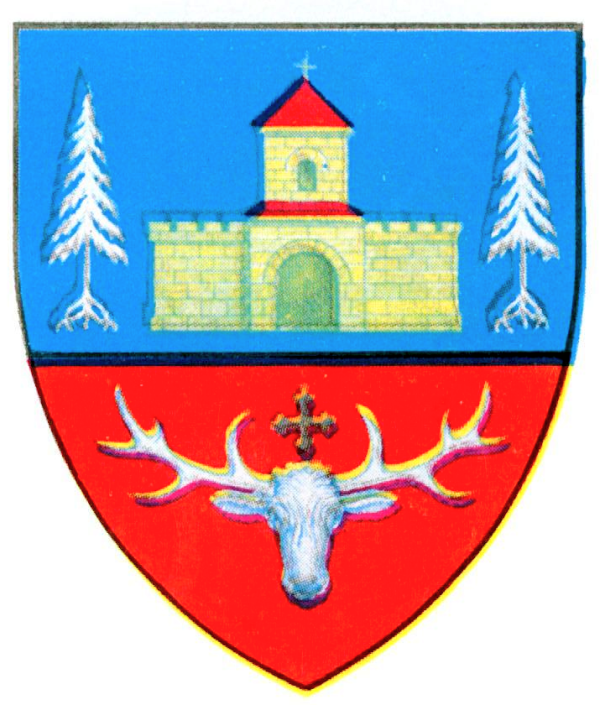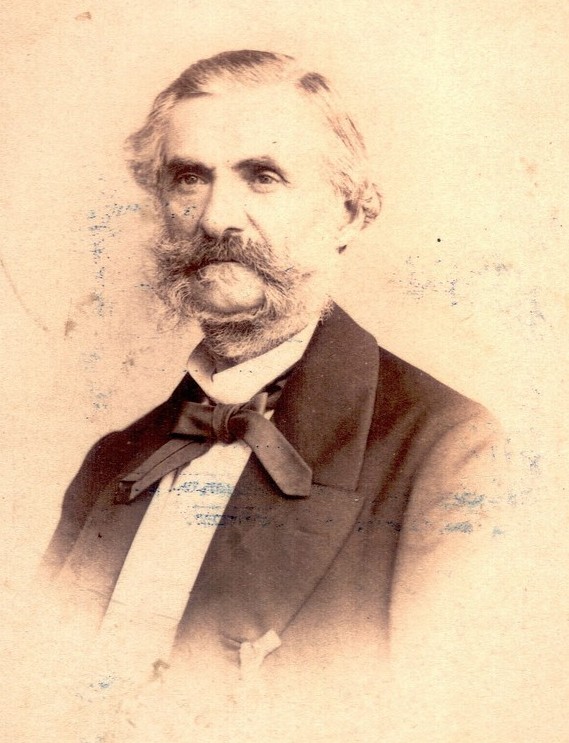|
Alexandru Săvulescu (architect)
Alexandru Săvulescu (1847–1902) was a Romanian architect, one of his country's first prominent practitioners of modern architecture. He combined elements of traditional Byzantine architecture and Romanian architecture with French Art Nouveau in an eclectic style. He served as the chief architect for the Ministry of Public Education and Religious Affairs and the president of the Romanian Society of Architects. He helped found both the latter organization and the Romanian National School of Architecture. Some of his most renowned buildings are the Communal Palace of Buzău, the Noblesse Palace and the Post and Telegraph Palace, which now houses the National Museum of Romanian History. Biography Săvulescu was born in 1847 in Șimian, Mehedinți, Cerneți, Mehedinți County, in what was then Wallachia. He studied in Bucharest and then went to Paris, where he graduated from the École des Beaux-Arts, in the studio of Léon Ginain. He returned to Romania in 1874 and became the archi ... [...More Info...] [...Related Items...] OR: [Wikipedia] [Google] [Baidu] |
Șimian, Mehedinți
Șimian is a Commune in Romania, commune located in Mehedinți County, Oltenia, Romania. It is composed of eight villages: Cerneți, Dedovița Nouă, Dedovița Veche, Dudașu, Erghevița, Poroina, Șimian, and Valea Copcii. Natives *Dimitrie Grecescu (1841–1910), botanist and physician *Constantin Oțet (1940–1999), football coach *Alexandru Săvulescu (architect), Alexandru Săvulescu (1847–1902), architect *Sorin Vlaicu (b. 1965), football player See also *Șimian (island) *CS Minerul Mehedinți References [...More Info...] [...Related Items...] OR: [Wikipedia] [Google] [Baidu] |
Ministry Of Culture And National Patrimony (Romania)
The Ministry of Culture of Romania () is one of the ministries of the Government of Romania. The current position holder is Natalia-Elena Intotero from the Social Democratic Party (PSD). The Romanian National Institute of Historical Monuments, part of this ministry, maintains the list of historical monuments in Romania. The list, created in 2004–2005, contains historical monuments entered in the National Cultural Heritage of Romania. List of Culture Ministers See also * Culture of Romania * List of historical monuments in Romania References External links MCC.ro* GUV.roRomanian National Institute of Historical MonumentsList of Historical Monumentsat Romanian Ministry of Culture and National Patrimony (in Romanian) at Romanian National Institute of Historical Monuments (in Romanian) Culture Romania Romania is a country located at the crossroads of Central Europe, Central, Eastern Europe, Eastern and Southeast Europe. It borders Ukraine to the north an ... [...More Info...] [...Related Items...] OR: [Wikipedia] [Google] [Baidu] |
Amzei Church
Amzei Church () is a Romanian Orthodox church located at 12 Biserica Amzei Street in Bucharest, Romania. It is dedicated to the Feast of the Annunciation. The original church on the site, a small single-domed structure dedicated to Saint Nicholas, was built between 1807 and 1810. The chief ''ktetor'' was the deputy ''Vistier'' (treasurer) of Wallachia, Amza Năescu; following his death, the church was nicknamed after him. A list of people to be prayed for (''pomelnic'') survives, carved in elegant Romanian Cyrillic; it was originally in the altar table and is now in the yard. Prior to 1832, the church was surrounded by cells where a school with two grades for beginners functioned. An 1846 fire destroyed the church; an ample restoration followed. During repairs in 1875, two domes of wood and tin were added. Also that year, a neoclassical stone fountain, partly sculpted, was built on the grounds, near the parish house. The old church was entirely demolished in 1898, on the initiativ ... [...More Info...] [...Related Items...] OR: [Wikipedia] [Google] [Baidu] |
Alexandria, Romania
Alexandria () is the capital city of the Teleorman County, Muntenia, Romania. It is located south-west of Bucharest, towards the Bulgarian border, and has over 40,000 inhabitants. The 44th parallel north passes just north of the city. Geography Alexandria is situated in the middle of the Wallachian Plain, on the banks of the Vedea, Vedea River. It is located in the central part of Teleorman County, at a distance of from Giurgiu and from Bucharest. The city is traversed by the Roads in Romania, national road DN6, which links Bucharest to the Banat region in western Romania; the road is part of European route European route E70, E70. The Alexandria train station serves the Căile Ferate Române, CFR Căile Ferate Române Line 900, Line 909, with service towards Roșiorii de Vede (to the northwest) and Zimnicea (to the south, on the Danube). History Alexandria was named after its founder, Alexandru II Ghica, Alexandru D. Ghica, List of rulers of Wallachia, Prince of Wallachia fr ... [...More Info...] [...Related Items...] OR: [Wikipedia] [Google] [Baidu] |
Romanian War Of Independence
The Romanian War of Independence () is the name used in Romanian historiography to refer to the phase of the Russo-Turkish War (1877–78), in which Romania, fighting on the Russian side of the war, gained independence from the Ottoman Empire. On , Romania and the Russian Empire signed a treaty at Bucharest under which Russian troops were allowed to pass through Romanian territory, with the condition that Russia respected the integrity of Romania. Consequently, the mobilization of the Romanian troops also began, and around 114,000 soldiers were massed in the south of the country to defend against an eventual attack of the Ottoman forces from south of the Danube. On , Russia declared war on the Ottoman Empire and its troops entered Romania through the newly built Eiffel Bridge, on their way to the Ottoman Empire. Due to great losses, the Russian Empire asked Romania to intervene. On , the first Romanian Army units crossed the Danube and joined forces with the Russian Army. Roman ... [...More Info...] [...Related Items...] OR: [Wikipedia] [Google] [Baidu] |
Câmpulung
Câmpulung (also spelled ''Cîmpulung'', , , Old Romanian ''Dlăgopole'', ''Длъгополе'' (from Middle Bulgarian), or ''Câmpulung Muscel'') is a municipiu, city in Argeș County, Muntenia, Romania. It is attested on the Fra Mauro map from 1450 as Campo longo. It is situated among the outlying hills of the Southern Carpathians, at the head of a long well-wooded glen traversed by the river Râul Târgului, Târgului, a tributary of the river Argeș (river), Argeș. History Near Câmpulung are the remains of Jidava (castra), Jidava (or Jidova) Roman fort built around 190–211 AD on the frontier of the empire, the Limes Transalutanus; and just next to it, vestiges of a Roman colony, variously identified with Romula, Stepenium and Ulpia Traiana Sarmizegetusa, Ulpia Traiana. Now called ''Grădiștea'' (meaning ''place of a fortress'' in Romanian) or ''Jidovi''. Campulung was also important because it was only 37 km away from the Bran Pass an important trade and mil ... [...More Info...] [...Related Items...] OR: [Wikipedia] [Google] [Baidu] |
Ion Mincu University Of Architecture And Urbanism
The Ion Mincu University of Architecture and Urban Planning () is a public university for architectural and urbanism studies in Bucharest, Romania. The university was named after the architect and engineer Ion Mincu Ion Mincu (; December 20, 1852 – December 6, 1912 in Bucharest) was a Romanian architect known for having a leading role in the development of the Romanian Revival style. Most of his projects are located in Bucharest, including his main work .... It was formerly named ''Superior School of Architecture in Bucharest ''(). References External links Official site Architecture schools in Romania Universities in Bucharest Universities and colleges established in 1952 1952 establishments in Romania {{Romania-university-stub ... [...More Info...] [...Related Items...] OR: [Wikipedia] [Google] [Baidu] |
Alexandru Orăscu
Alexandru Hristea Orăscu (30 July 1817 – 16 December 1894) was a Romanian architect famous for his Neoclassicist and Renaissance-revival works. He was born in Bucharest in 1817 to serdar Hristea Orăscu and his wife, Elena Orăscu. He graduated from the Saint Sava High School in his native city. Upon recommendation from his mathematics teacher, Petrache Poenaru, Orăscu was hired in 1837 as aide to the chief architect of the city, a job he held until 1841. He then studied architecture in Berlin and Munich, obtaining his architect diploma in 1847. He designed the initial building of the University of Bucharest (1837–1869), the Grand Hôtel du Boulevard in Bucharest (1865–1871), the Metropolitan Cathedral in Iași (1880–1887), the boys' gymnasium in Ploiești (1865–1866), the Carol I Hotel in Constanța (1879), and the Domnița Bălașa Church in Bucharest (1881–1885). Orăscu was the president of the Romanian Architects’ Society, and served as rector ... [...More Info...] [...Related Items...] OR: [Wikipedia] [Google] [Baidu] |
Ion Mincu
Ion Mincu (; December 20, 1852 – December 6, 1912 in Bucharest) was a Romanian architect known for having a leading role in the development of the Romanian Revival style. Most of his projects are located in Bucharest, including his main works, the Palace of Justice, the , and the Central Girls' School. Biography Mincu was born in 1852 in Focșani, at the time in Putna County, Moldavia. He was the son of Pavel and Maria, and had three brothers and four sisters (one of them, Sultana, became the mother of Duiliu Zamfirescu). He studied from 1863 to 1871 at Unirea High School, in Focșani and from 1871 to 1875 at the School of Roads and Bridges, in Bucharest, becoming an engineer. From 1873 to 1877 he served as chief engineer for Putna County, residing in Focșani. During that time, he also worked on the construction of the Ploiești–Predeal road (now part of the DN1 road). Starting in 1877 Mincu pursued his studies in Paris, first for a year at the École Spéciale d ... [...More Info...] [...Related Items...] OR: [Wikipedia] [Google] [Baidu] |
Dimitrie Maimarolu
Dimitrie Maimarolu (1859 in Bucharest – 1926) was a Romanian architect, whose designs featured French Beaux-Arts style. He came from an Aromanian family, with roots in Macedonia. He studied architecture in France, first with Julien Guadet and from 1881 at the École des Beaux-Arts in Paris. After graduating in 1885, he returned to Romania and is named architect for the Interior Ministry. Promoted to architect-in-chief in 1887, he held the position until 1892. By 1898 he was working for the Agriculture Ministry, developing the Bibescu Garden in Craiova. Among the buildings he designed are: * Argeș County Prefecture Building (built in 1899, in 1970 it became the County Museum of History and Natural Science). * Gorj County Prefecture, in Târgu Jiu (finishing touches, 1902). * Church of St. Sylvester, Bucharest (reconstruction and enlargement, from 1904 to 1907). * St. Haralambos Church of Turnu Măgurele (1905) * Palace of the Chamber of Deputies (the Patriarchal Palace t ... [...More Info...] [...Related Items...] OR: [Wikipedia] [Google] [Baidu] |
Turnu Severin
Drobeta-Turnu Severin (), colloquially Severin, is a city in Mehedinți County, Oltenia, Romania, on the northern bank of the Danube, close to the Iron Gates. It is one of six Romanian county seats lying on the river Danube. "Drobeta" is the name of the ancient Dacian and Roman towns at the site, and the modern town of Turnu Severin received the additional name of Drobeta during Nicolae Ceaușescu's national-communist dictatorship as part of his myth-making efforts. Etymology Drobeta was originally a Dacian town.Drobeta–Turnu Severin at britannica.com, accessed 2021-10-14. The Roman fort built by Emperor a ... [...More Info...] [...Related Items...] OR: [Wikipedia] [Google] [Baidu] |





